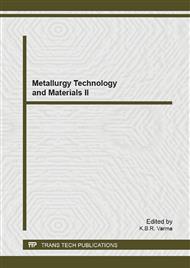p.43
p.47
p.51
p.55
p.64
p.72
p.81
p.87
p.91
Dynamic Material Flow Analysis of Steel Resources in China Based on Circular Economy Theory
Abstract:
The circular economy (CE) is a new development strategy for China to alleviate the contradiction between rapid economic growth and the shortage of raw materials and energy. As the basic material, steel is a key driver of the world's economy. Therefore, it is essential to set up CE indicators system to understand the mechanism of steel resources role in the circular economy. In this paper, a national level material flow evaluation framework based on CE theory is presented at the first. Then steel resources national lifetime cycle diagram is built based on dynamic Material Flow Analysis (MFA) method considering the steel lifetime circular flow characteristics. Under the guidance of this diagram, the material flow results of various stages (such as production process, fabrication & manufacturing process, in-use process, etc.) of steel lifetime cycle between 2001-2010 in China is obtained, including the end-of-life scarp amount of nine downstream industries. The results indicate that China steel resources has made gratifying achievements in improving productivity, reducing energy consumption and related pollution emission, but the degree of overall circulation remains to be improved urgently. In the end, a sketch of the future relevant policy recommendations are provided.
Info:
Periodical:
Pages:
64-71
Citation:
Online since:
September 2013
Authors:
Price:
Сopyright:
© 2013 Trans Tech Publications Ltd. All Rights Reserved
Share:
Citation:


